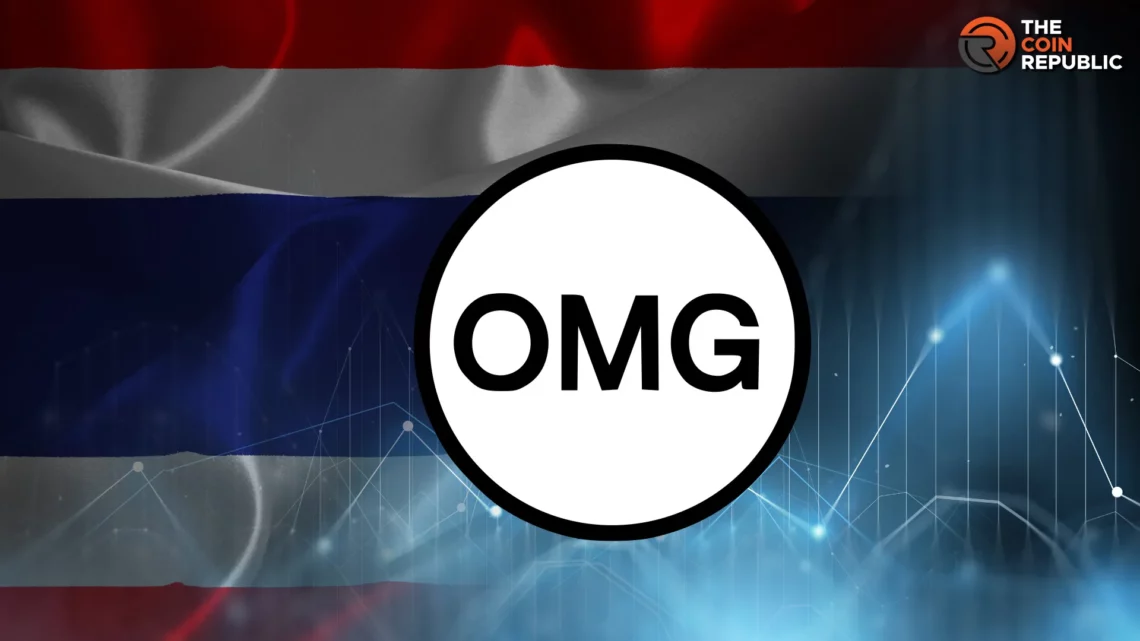OMG Network, a layer-2 scaling solution, combines all possible functions to make the transaction process convenient and secure.
From traditional payment systems to online and decentralized, financial systems have completely evolved with time. OMG Network is one platform that improves the safety and speed of transactions in a decentralized environment.
What is The OMG Network?
OMG Network, a cryptocurrency payment platform streaming over the Ethereum blockchain, aims to deliver fast, secure, and cost-effective transactions of digital assets. It is a non-custodial, layer-2 scaling solution offering transaction verification in batches.
Another essential purpose is to overcome the traditional payment industry’s limitations and promote a decentralized and open financial infrastructure.
The platform was launched by Jun Hasegawa and Donnie Harinsut in June 2020 and offered high-speed and scalable transactions on the Ethereum network. Moreover, OMG blockchain, node operators, wallets, decentralized applications, and cryptocurrency exchanges are a few of the significant components of the network.
History and Overview
The network, formerly known as OmiseGo, was started to mitigate the limitations of the traditional Thailand payment system and offer an effective online payment solution.
OmiseGo was introduced in 2013 and shifted to its own blockchain in 2018. In 2017, the platform announced its Initial Coin Offering (ICO), raising $25 Million. Based on the ICO, airdrops were announced, permitting the Ether owner to participate.
On June 1, 2020, the platform rebranded to OMG Network and resolved the confusion between OmiseGo and the Mise payment system. Additionally, its advisory team consists of two famous faces, Vitalik Buterin and Gavin Wood, co-founders of Ethereum.
The Complete Working
The platform aims to promote the global adoption of blockchain technology by enhancing efficiency and transaction speed and sustaining decentralization and security.
The platform uses plasma technology to make this work, which helps conduct off-chain transactions. The technology doesn’t record the transactions on the Ethereum blockchain on an immediate basis. Instead, the transactions are grouped and periodically documented on the blockchain, which mitigates the issues related to scalability and speed.
Additionally, OMG, the native cryptocurrency of the network, is used for paying transaction fees. Furthermore, the validators validate the transactions and require a stake of at least a minimal amount of OMG tokens as collateral.
Other significant components that enhance the network’s operability are as follows:
Child Chain: It uses the More Viable Plasma (MoreVP) approach to verify and validate transactions. It is an off-chain layer developed over the Ethereum blockchain where transactions are executed.
Watchers: Watchers are the independent parties that help validate and verify transactions over the Child chain. The party ensures accurate transaction validation and prevention of double spending.
Node operators: Node operators in the network are accountable for managing the nodes supporting the watchers and child chain. They earn transaction fees in return and play a significant role in the network’s security by staking OMG tokens.
Wallets are software applications that permit individuals to store and manage tokens. Users can choose various options, including mobile wallets, desktop wallets, and hardware wallets.
Advantages and Disadvantages
The network delivers a wide range of benefits as well as flaws:
Advantages: High transaction speeds and interoperability with the Ethereum blockchain are among the key benefits of the network. It operates with the popular Plasma technology that upsurges security and reliability.
Furthermore, a trustless network permits individuals to access the funds in any situation. Also, the Thailand government strongly supports the network, enhancing its reliability in the crypto market.
The platform has strong partnerships with Shinhan Financial Group, SMBC, GGV, AscendCapital, EastVentures, and others.
Disadvantages: Despite significant benefits, the platform has a few drawbacks, including slow development and high competition. During the ICO, the developers announced the network’s launch date changes.
The team made some significant changes to the road map, which resulted in the postponement of the network launch. Also, most traders and investors prohibit trading with OMG due to the complexity of the price forecast.
OMG Tokenomics
OMG, the native token, plays a crucial role in the overall functionality of the OMG network and is mainly used for paying transaction fees and staking. Token holders can stake the tokens to participate in the transaction validation process and contribute to the network’s decentralization and maintenance.
The token has a maximum supply of 140,245,399 tokens with 100% circulation. 65.1% of the supply is reserved for investors, and 5% were distributed in an airdrop. Around 29.9% are secured for the project and development team.
The token is available on cryptocurrency exchanges, including Coinbase, BingX, HTX, OKX, KuCoin, and Binance. The trading player involves OMG/USDT, OMG/BTC, and OMG/ETH.
Conclusion
OMG network is emerging as a well-established platform that offers safe, secure, and faster transaction services compared to others. The network operates over the latest technologies and components, such as Plasma technology, OMG blockchain, node operators, wallets, decentralized applications, and cryptocurrency exchanges. Its native token is mainly used for staking purposes and paying transaction fees.
FAQs
What is the circulating supply of OMG tokens?
The circulating supply of OMG tokens is 140,245,399, and the maximum is 140,245,399.
Where to buy OMG tokens?
The token is available on top crypto exchanges, including Coinbase, BingX, HTX, OKX, KuCoin, and Binance.
Why is the network unique?
The platform mainly emphasizes speed and cost barriers and overcomes them using the latest technologies, such as plasma technology.
Who is the founder of the OMG platform?
Jun Hasegawa and Donnie Harinsut founded the platform.

With a background in journalism, Ritika Sharma has worked with many reputed media firms focusing on general news such as politics and crime. She joined The Coin Republic as a reporter for crypto, and found a great passion for cryptocurrency, Web3, NFTs and other digital assets. She spends a lot of time researching and delving deeper into these concepts around the clock, and is a strong advocate for women in STEM.


 Home
Home News
News










